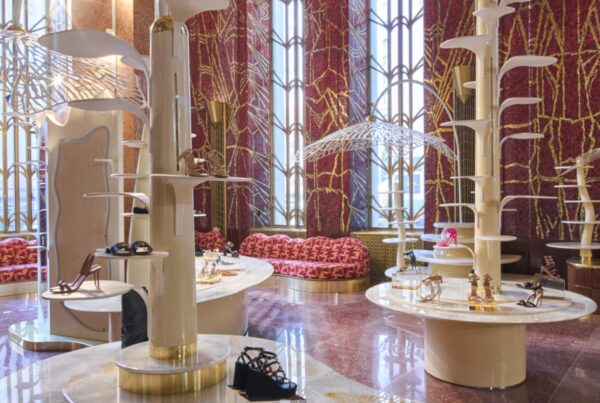Artificial intelligence has been dominating the news cycle for months and the world of science fiction for decades. Back in December, there was the AI art Instagram trend in which users were using the Lensa AI app to instantly create an array of illustrations of themselves. This took off but settled down shortly thereafter when numerous artists expressed that their artistic style was lifted for use in the app without acknowledgment or compensation. More recently, there has been the rise of ChatGPT, an interactive bot created by Open AI that can write menus and essays—and really anything else you tell it to—based on only a sentence or two of guidance.
Elle Decor published a piece detailing how recent leaps in AI technology have been impacting the design world. According to London-based architect Arthur Mamou-Mani, using AI as a rendering tool saves a lot of time.
“Usually when you’re an architect, you have an idea, you sketch, you go on [the CAD software] Rhino, you start modeling it, you tweak it, then you have to render it. [With generative AI], you have an idea, you start typing some words, and boom, you get the final renderings. The immediacy of the results versus the idea has never been that quick, which means you can iterate extremely fast.”
Text-to-image platforms like DALL-E, Stable Diffusion, and Midjourney have all come very far in a remarkably short period of time. The programs went from cumbersome and highly limited to user-friendly and wide-open. Architect Andrew Kudless told Elle Decor that though “people have been creating images with AI for 15 years,” the state of technology at the time meant it was used more as an instrument of curiosity and fun than an impactful program. “All it could produce were super-psychedelic images of, like, dogs’ faces made of other dogs’ faces or the Mona Lisa made out of cats.” He continued on to say that although that was once the case, things have certainly changed: “What’s happened in the past year is that the technology has gotten much, much better. And it’s also become much more accessible.” Designers across the globe are now utilizing AI as a way to jumpstart projects. Instead of starting from a blank page, a designer can type in some inspiring words, phrases, or styles, see what pops up, and work from there.
Though these platforms are being utilized as tools for inspiration, they are not without controversy. To create these AI systems, the bots study billions of images online. The bots then take in that immense amount of information and create something from it. But the bot does not own the content that it draws from, and this has led to some legal challenges. Getty Images, for example, plans to sue Stability AI for copyright infringement. There is what appears to be an equal level of excitement and concern around these AI programs. Speaking to Elle Decor, architect David Benjamin, who teaches at Columbia University and will be covering AI in a 2023 course entitled “Climate Change, Artificial Intelligence, and New Ways of Living,” said, “If we don’t get in there and apply our own critical thinking to these tools, and if we don’t develop hypotheses about productive ways to use them—or warnings about how not to use them—then others will do it without us.” Essentially, the usage of these AI tools is all but inevitable, but there is a smart way to use them and, to put it mildly, a not-so-smart way.
Thus, it is vital for design companies to be aware of the latest technology and know the correct way to yield said technology. Our sister company Eqpt is at the forefront of next-gen design; reach out to learn more about the evolving intersection between interiors and emergent tech.


